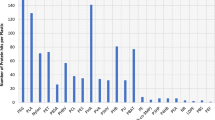Abstract
Phoxim, an organophosphorus pesticide, was widely used in agriculture but was banned because of its associated toxic runoff, which accumulated in surrounding water outlets. Here, Enterobacter cloacae was isolated from water outlets adjacent to industrial, agricultural and residential sewage having high organic phosphorus contents. To investigate the ability of E. cloacae to respond and survive under phoxim stress, both at the proteomic and transcriptional level, two-dimensional gel electrophoresis (2-DE), matrix-assisted laser desorption/ionization time of flight mass spectrometry (MALDI-TOF-MS/MS) and quantitative real-time PCR (qPCR) were used. A 2-DE analysis showed that 12 h post phoxim exposure, 46 proteins were differentially expressed and 21 protein spots were selected for MALDI-TOF-MS/MS identification. This resulted in the successful identification of 16 spots, nine up-regulated and seven down-regulated. Of these, stress response proteins, including the chaperone protein DnaK, GroEL, F0F1 ATP synthase subunit beta, phosphoenolpyruvate carboxykinase and outer membrane channel protein, were only expressed in the phoxim-treated experimental group. To validate these findings, seven genes were selected and positively confirmed using qPCR. The results suggest that the identified expression patterns relate to E. cloacae resistance and tolerance to high phoxim concentrations.
Similar content being viewed by others
References
Matsushima, A., S. Takakura, N. Fujihara, T. Saito, Y. Ito, Y. Iinuma, and S. Ichiyama (2010) High prevalence of mutators among Enterobacter cloacae nosocomial isolates and their association with antimicrobial resistance and repetitive detection. Clin. Microbiol. Infection. 16: 1488–1493.
Sanders, W. and C. C. Sanders (1997) Enterobacter spp.: Pathogens poised to flourish at the turn of the century. Clin. Microbiol. Rev. 10: 220–241.
Zhonghua, W., Y. Jianqiang, Z. Dijun, Z. Chundan, S. Xiurong, and L. Taiwu (2014) Composition and structure of bacterial communities in waste water of aquatic products processing factories. Res. J. Biotechnol. 9: 65–70.
Dolejska, M., P. Frolkova, M. Florek, I. Jamborova, M. Purgertova, I. Kutilova, A. Cizek, S. Guenther, and I. Literak (2011) CTX-M-15-producing Escherichia coli clone B2-O25b-ST131 and Klebsiella sp. isolates in municipal wastewater treatment plant effluents. J. Antimicrob. Chem. 66: 2784–2790.
Kim, M. R., S. A. Yu, M. Y. Kim, K. M. Choi, and C. W. Kim (2014) Analysis of glycated serum proteins in type 2 diabetes patients with nephropathy. Biotechnol. Bioproc. Eng. 19: 83–92.
Donghui, Z., Z. Furong, N. Alasdair, X. Minjun, S. Huiqun, L. Ruiqing, H. Siyang, and Z. Xingquan (2014) Comparative proteomic analysis of different Toxoplasma gondii genotypes by two-dimensional fluorescence difference gel electrophoresis combined with mass spectrometry. Electrophoresis 35: 533–545.
Nishida, N., M. Yagi-Utsumi, F. Motojima, M. Yoshida, I. Shimada, and K. Kato (2013) Nuclear magnetic resonance approaches for characterizing interactions between the bacterial chaperonin GroEL and unstructured proteins. J. Biosci. Bioeng. 116: 160–164.
Chitradevi, S. T., G. Kaur, K. Singh, R. Sugadev, and A. Bansal (2013) Recombinant heat shock protein 60 (Hsp60/GroEL) of Salmonella enterica serovar Typhi elicits cross-protection against multiple bacterial pathogens in mice. Vaccine. 31: 2035–2041.
Kuwana, R. and N. Yamamoto (2012) Increases in GroES and GroEL from Lactobacillus acidophilus L-92 in response to a decrease in medium pH, and changes in cytokine release from splenocytes: Transcriptome and proteome analyses. J. Biosci. Bioeng. 114: 9–16.
Melkani, G. C., R. L. Sielaff, G. Zardeneta, and J. A. Mendoza (2008) Divalent cations stabilize GroEL under conditions of oxidative stress. Biochem. Biophysic.l Res. Communicat. 368: 625–630.
Hu, B., L. H. Phuoc, P. Sorgeloos, and P. Bossier (2014) Bacterial HSP70 (DnaK) is an efficient immune stimulator in Litopenaeus vannamei. Aquacult. 418-419: 87–93.
Fujii, J. and Y. Ikeda (2002) Advances in our understanding of peroxiredoxin, a multifunctional, mammalian redox protein. Redox Rep. 7: 123–130.
Venardos, K. M. and D. M. Kaye (2007) Myocardial ischemiareperfusion injury, antioxidant enzyme systems, and selenium: A review. Curr. Med. Chem. 14: 1539–1549.
Mangiullo, R., A. Gnoni, F. Damiano, L. Siculella, F. Zanotti, S. Papa, and G. V. Gnoni (2010) 3,5-diiodo-L-thyronine upregulates rat-liver mitochondrial F(0)F(1)-ATP synthase by GA-binding protein/nuclear respiratory factor-2. Biochim. et Biophysica Acta. 1797: 233–240.
Hongquan W., X. Yuxia, Z. Xiaoyan, Z. Hong, Y. Jie, S. Xiaobo, G. Jingchun, and Z. Cuiqing (2009) Overexpression of F(0)F(1)-ATP synthase alpha suppresses mutant huntingtin aggregation and toxicity in vitro. Biochem. Biophysic. Res. Communicat. 390: 1294–1298.
Ma, J. F., P. R. Ryan, and E. Delhaize (2001) Aluminium tolerance in plants and the complexing role of organic acids. Trends Plant Sci. 6: 273–278.
Yuxin Y., L. Ming, Z. Heng, Y. Chunxiang, and H. Yujin (2011) Isolation and characterization of an apple cytosolic malate dehydrogenase gene reveal its function in malate synthesis. J. Plant Physiol. 168: 474–480.
Kangmei, L., G. Xuefang, M. Lina, W. Zonghua, L. Guodong, and L. Bo (2008) The biological characteristics of organophosphorus pesticide-degrading bacterium, Enterobacter cloacae. Chin. Agricult. Sci. Bull. 124: 382–386.
Yen, M. R., C. R. Peabody, S. M. Partovi, Y. Zhai, Y. H. Tseng, and M. H. Saier (2002) Protein-translocating outer membrane porins of Gram-negative bacteria. Biochimica et Biophysica Acta (BBA)-Biomemb. 1562: 6–31.
Lavigne, J. P., A. Sotto, M. H. Nicolas-Chanoine, N. Bouziges, J. M. Pages, and A. Davin-Regli (2013) An adaptive response of Enterobacter aerogenes to imipenem: Regulation of porin balance in clinical isolates. Internat. J. Antimicrobial Agents. 41: 130–136.
Khan, J., S. Gupta, K. Chattopadhyay, and A. Mukhopadhaya (2012) Refolding and functional assembly of the Vibrio cholerae porin OmpU recombinantly expressed in the cytoplasm of Escherichia coli. Protein Expres. Purif. 85: 204–210.
Author information
Authors and Affiliations
Corresponding authors
Rights and permissions
About this article
Cite this article
Zhang, D., Xu, J., He, W. et al. Characterization of Enterobacter cloacae under phoxim stress by two-dimensional gel electrophoresis. Biotechnol Bioproc E 20, 403–409 (2015). https://doi.org/10.1007/s12257-014-0771-4
Received:
Revised:
Accepted:
Published:
Issue Date:
DOI: https://doi.org/10.1007/s12257-014-0771-4




